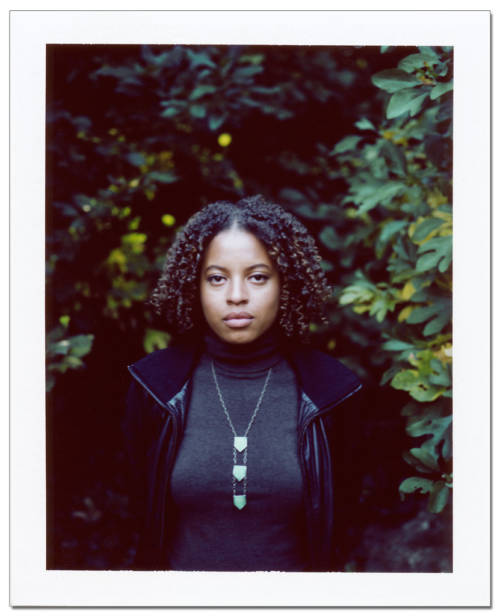
Naima Green’s Beautiful Portraiture Is Changing Public Perception of Green Spaces
In Search of a Greener New York is an ongoing Garden Collage series of explorations about sustainability efforts in New York City and beyond– including the people, places, and ideas that are making Manhattan a healthier, happier place to live. In this column, we spotlight individuals who are making New York a “greener” place in an attempt to discover how, exactly, they are doing it. This week, GC spotlights Naima Green, a photographer whose work explores outdoor spaces in NYC where people of color aren’t typically depicted.
Naima Green’s Jewels from the Hinterland is a subversive body of work– though it shouldn’t have to be. As Green explains, the project challenges “the absence of black and brown bodies in urban, green environments,” especially in the context of leisure. “I make images of these artists feeling at ease in natural green spaces, regions where black and brown urbanites are not ‘supposed’ to be at home: our hinterlands.” Green (pictured below) has worked previously as a photographer on The Rooftop Growing Guide (a favorite garden resource of ours), capturing the organic bustle and improvised charm of various urban rooftop gardens. Jewels from the Hinterland has a similarly comfortable ease, but its own curated, intimate beauty; the photographs are modern in their simplicity, rendered timeless by the rich greenery that surrounds each subject.
Growing up, Green’s parents kept a garden at their home in Westchester, New York. But Green quickly realized hers was an experience invisible to the mainstream. “As I grew older, I became increasingly aware that my backyard is not the typical narrative associated with blackness…What I saw instead were black and brown bodies in rough, hard, and aggressive spaces. Contemporary American audiences are often comfortable seeing brown faces this way: in desolate, concrete spaces that can, and frequently do, suggest decay.”
A challenge to this narrative, Jewels from the Hinterland has become a way to “understand blackness in a more nuanced way”. Green works with artists of all different mediums– from DJs to entrepreneurs to poets– to create a full and accurate “representation of blackness and creativity in New York right now” (since 2013, when the project began, she has photographed 80 individuals). Green’s work shifts and progresses with her subjects, at times centering “on the etherealness of women” and at others “visualizing black men as soft and vulnerable,” and often exploring queerness. “Participants have told me that they have never seen themselves in this way, as an art object, as having critical historical and contemporary significance, as being truly seen.”

Salome, Brooklyn Botanical Garden

Sara Elise, Brooklyn Botanical Garden

Sade, West Harlem Piers Park

Lee, Central Park

Cosmo, VSC

Andre, Eagle Street Rooftop Farm

Alex, Brooklyn Botanical Garden

Lipton, Prospect Park
The other major influence for Green’s work has, of course, been the setting. “New York City was the perfect place for me to begin this series because I have studied, in-depth, the history of New York: the way it was and is designed, how it functions at a structural level, public policy, the arts, housing, and the city’s residents,” Green told GC. “New York has been my home for 17 years and it will always be home, no matter where I’m living. Having the foundational knowledge and comfort in New York allowed me to focus on discovering and questioning our green spaces and who has access to them. Even though NYC is full of free parks, gardens, and green spaces, not all of the city’s residents feel a sense of ownership or place in these spaces. And that could be because of where they are geographically located or who is often represented as enjoying green space and having time for leisure.”
“Even though NYC is full of free parks, gardens, and green spaces, not all of the city’s residents feel a sense of ownership or place in these spaces.”
In the coming months, however, Green is taking her project to Cape Town and Johannesburg in South Africa, where she is presenting the series and her Master’s research at Black Portraitures. “I’m excited to create new work and maintain the fundamental aspects of Jewels from the Hinterland but also recontextualize the series in new cities,” Green explained. “I am open to all the ways the work will grow in different cities and the South African histories and stories it might engage. I have a lot to look forward to.”
To learn more about Jewels From the Hinterland, check out Naima Green’s website or visit her Indiegogo.










































